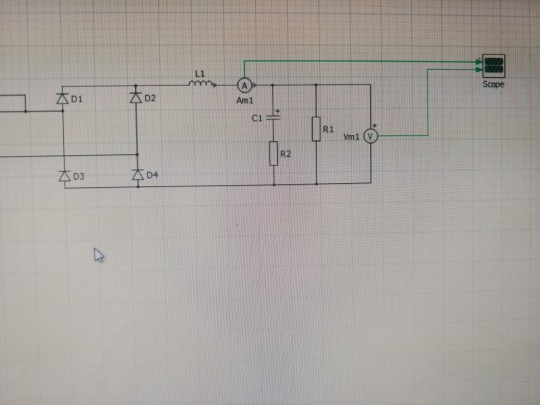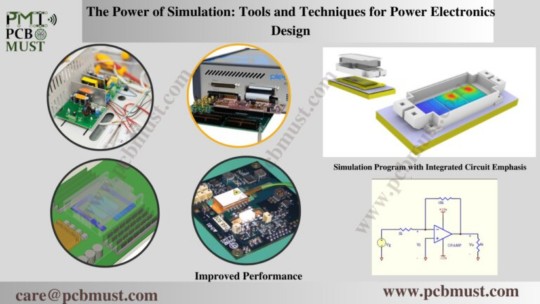#PLECS Power Simulator
Explore tagged Tumblr posts
Text
youtube
onsemi PLECS and Elite Power Simulators Webinar
https://www.futureelectronics.com/resources/featured-products/onsemi-sic-solutions-and-gate-driver-innovation . The new online Elite Power Simulator and Self-Service PLECS Model Generator from onsemi saves power electronic engineers time by providing state-of-the-art accurate simulation and EliteSiC product selection capabilities tailored to their customer’s application. https://youtu.be/46_rTtDao4c
#Elite Power Simulator#Self-Service PLECS Model Generator#onsemi#EliteSiC product selection#power application development cycle#PLECS Power Simulator#Power Simulator#Power Simulators#Youtube
1 note
·
View note
Text
youtube
onsemi PLECS and Elite Power Simulators Webinar
https://www.futureelectronics.com/resources/featured-products/onsemi-sic-solutions-and-gate-driver-innovation . The new online Elite Power Simulator and Self-Service PLECS Model Generator from onsemi saves power electronic engineers time by providing state-of-the-art accurate simulation and EliteSiC product selection capabilities tailored to their customer’s application. https://youtu.be/46_rTtDao4c
#Elite Power Simulator#Self-Service PLECS Model Generator#onsemi#EliteSiC product selection#power application development cycle#PLECS Power Simulator#Power Simulator#Power Simulators#Youtube
0 notes
Text
Technical advantages of ON Semiconductor's new ElitePower simulation tool and PLECS model self-service generation tool

【Lansheng Technology Information】ON Semiconductor recently released the Elite Power simulation tool and the PLECS model self-service generation tool (SSPMG). The Elite Power simulation tool is paired with PLECS to provide customers with a convenient online environment. Elite Power simulation tools bring several new features and advantages over the current state of the art. SSPMG is a breakthrough tool that increases the flexibility and accuracy of models used in PLECS simulations.
The PLECS model contains loss look-up tables (based on manufacturer data sheets) and thermal chains in the form of Cauer or Foster equivalent networks. During simulation, PLECS uses loss tables to interpolate and/or extrapolate to obtain bias point conduction and switching losses for circuit operation.
The most common method for measuring switching losses is the double pulse tester. ON Semiconductor's advanced dual-pulse testers are valuable for measuring lowest (or device) losses with negligible effect on parasitic elements, allowing comparisons across die sizes, RDS(ON) values and packages. However, data sheet loss values will not reflect the observed losses when customers evaluate losses in their actual applications. After further analysis, it became clear that the datasheet based PLECS model was not representative of the end user's application. Customers had to make a trade-off between cost and performance, so the inductors and capacitors chosen were not as ideal as those found in ON Semiconductor's double-pulse tester. Only if the user's application has the same parasitic environment as the manufacturer's datasheet double-pulse test environment, the simulation can be performed using the standard manufacturer-supplied PLECS model.
A better way to evaluate the customer's actual losses is to introduce the customer's real board and component (such as inductors and capacitors) parasitic elements into the dual pulse tester setup and adapt it to the specific customer application. Since this can be a very difficult measurement task, ON Semiconductor has launched SSPMG for this purpose, enabling customers to design PLECS models according to their application environment in a virtual prototyping environment. While all simulation-based virtual environments are only as good as the underlying model, ON Semiconductor's highly accurate physics-based models are the SSPMG engine customers can rely on to achieve high-fidelity PLECS models.
Lansheng Technology Limited, which is a spot stock distributor of many well-known brands, we have price advantage of the first-hand spot channel, and have technical supports.
Our main brands: STMicroelectronics, Toshiba, Microchip, Vishay, Marvell, ON Semiconductor, AOS, DIODES, Murata, Samsung, Hyundai/Hynix, Xilinx, Micron, Infinone, Texas Instruments, ADI, Maxim Integrated, NXP, etc
To learn more about our products, services, and capabilities, please visit our website at http://www.lanshengic.com
0 notes
Text


9/100 Days of Productivity 🌲
I read next chapter of "The Cat and the City" by Nick Bradley
Worked out
Read an article about a planned CCGT power plant in Grudziądz
Wrote next page in my art journal
Made a PLECS simulation of a H-bridge for converters theory class
Played with my cats
🎧 Ambient Light - Norwegian Valley
#100 dop#100 days of productivity#productivity challenge#stay productive#being productive#productive#productivity#studyblr#motivation#studying#inspiration#engblr#aesthetic#electrical engineering#engineering#engineering student#electrical engineering student#engineering studyblr#college student#grad student#study#student#university student#lightningstormstudies#study inspiration#study motivation#study aesthetic#notes#note taking#cats
7 notes
·
View notes
Text
The Power of Simulation: Tools and Techniques for Power Electronics Design
Power electronics play a critical role in modern society, powering everything from our smartphones to electric cars. However, designing and optimizing power electronics can be a complex and challenging task. Fortunately, the power of simulation can help engineers to design and optimize power electronics systems more efficiently and effectively. In this blog, we will explore the tools and techniques available for power electronics design simulation.

Simulation Tools
There are many simulation tools available for power electronics design, each with its strengths and weaknesses. Some of the most popular simulation tools include:
1.SPICE (Simulation Program with Integrated Circuit Emphasis):
SPICE is a circuit simulation program that allows engineers to simulate and analyze analog electronic circuits. It is widely used in the design and analysis of power electronics systems.
2.PLECS (Piecewise Linear Electrical Circuit Simulation):
PLECS is a simulation tool that enables engineers to model and simulate complex electrical systems, including power electronics. It has a user-friendly interface and is designed for both time-domain and frequency-domain simulations.
3.Simulink:
Simulink is a simulation tool that allows engineers to model and simulate complex systems using block diagrams. It is widely used in the design and analysis of power electronics systems, including motor control and power conversion.
Simulation Techniques
Simulation techniques can help engineers to optimize their power electronics designs and ensure that they meet their performance requirements. Some of the most commonly used simulation techniques include:
1.Transient Analysis:
Transient analysis is a simulation technique used to study the behavior of a circuit over time. It can help engineers to identify problems such as voltage spikes and circuit oscillations.
2.Frequency Analysis:
Frequency analysis is a simulation technique used to study the frequency response of a circuit. It can help engineers to identify problems such as resonance and filter design issues.
3.Thermal Analysis:
Thermal analysis is a simulation technique used to study the thermal behavior of a power electronics system. It can help engineers to identify hotspots and optimize cooling strategies.
4.Optimization:
Optimization is a simulation technique used to find the optimal values for the parameters of a power electronics system. It can help engineers to improve performance and efficiency while minimizing cost.
Benefits of Simulation
Simulation offers a range of benefits to engineers working in the field of power electronics design. Some of the most significant benefits include:
1.Faster Time-to-Market:
Simulation enables engineers to test and optimize their designs more quickly, reducing the time it takes to bring a product to market.
2.Lower Development Costs:
Simulation reduces the need for expensive hardware prototypes, saving both time and money.
3.Improved Performance:
Simulation enables engineers to optimize their designs for performance, improving efficiency and reducing the risk of failure.
4.Enhanced Reliability:
Simulation enables engineers to identify potential issues before they occur, reducing the risk of failure and improving reliability.
Conclusion
Power electronics play a critical role in modern society, and simulation tools and techniques can help engineers to design and optimize power electronics systems more efficiently and effectively. With the right simulation tools and techniques, engineers can optimize their designs for performance, reliability, and cost-effectiveness, bringing their products to market more quickly and with greater confidence. As the field of power electronics continues to evolve, we can expect to see even more powerful and sophisticated simulation tools and techniques emerge in the years to come.
About the Author: Avi Gupta, Founder of PCB Must Innovations, is a dynamic force in the world of electronics design. With a wealth of industry experience, Avi thrives on solving intricate problems and delivering dependable solutions. A tech enthusiast, Avi stays ahead of trends while cherishing precious moments with family. Avi could be reached at [email protected]
0 notes
Text


10/100 Days of Productivity 🦄
I brushed my cats' fur
Worked out
Finished the PLECS simulation for converters theory class
Read next chapter of "Metro 2033" by Dmitry Glukhovsky
Went shopping
Read an article about Hinkley Point C Power Plant
🎧 Lydmor - 三 Killing Time
#100 dop#100 days of productivity#studyblr#motivation#studying#inspiration#engblr#aesthetic#electrical engineering#engineering#engineering student#productivity#productivity challenge#stay productive#being productive#productive#engineering studyblr#lightningstormstudies#electrical engineering student#study#student#college student#grad student#university student#power electronics#electronics#uni#stem#study inspiration#study motivation
3 notes
·
View notes